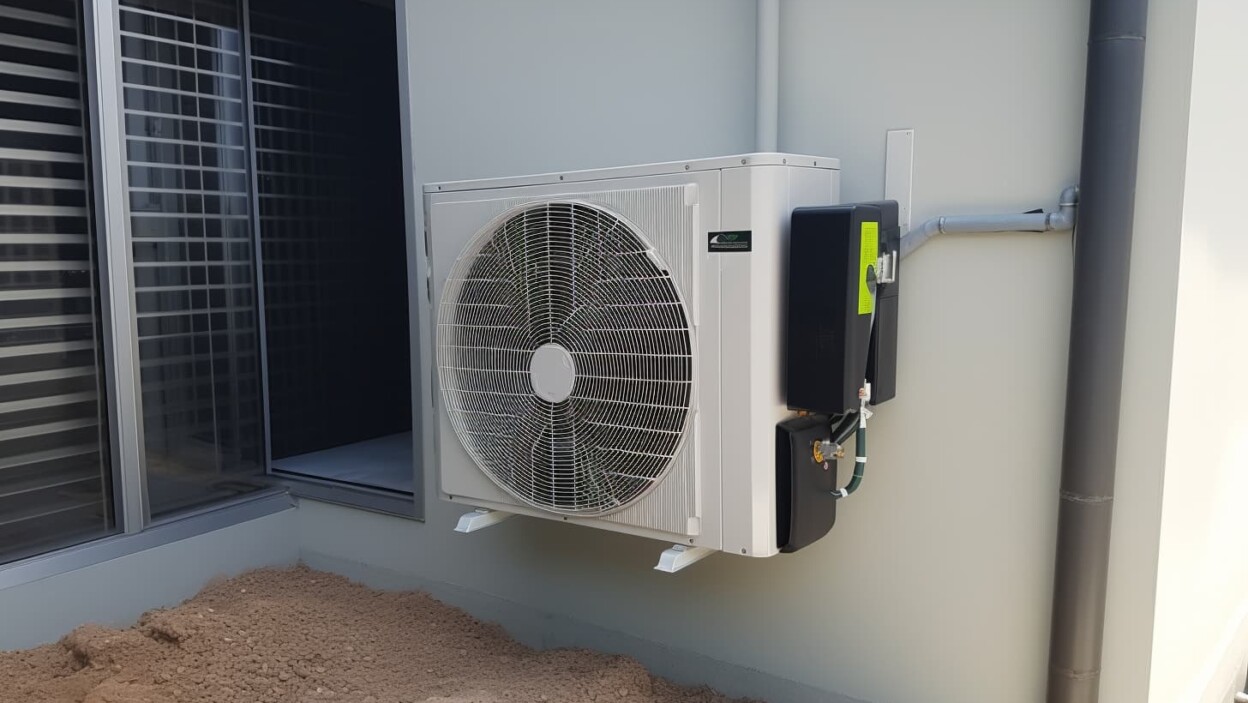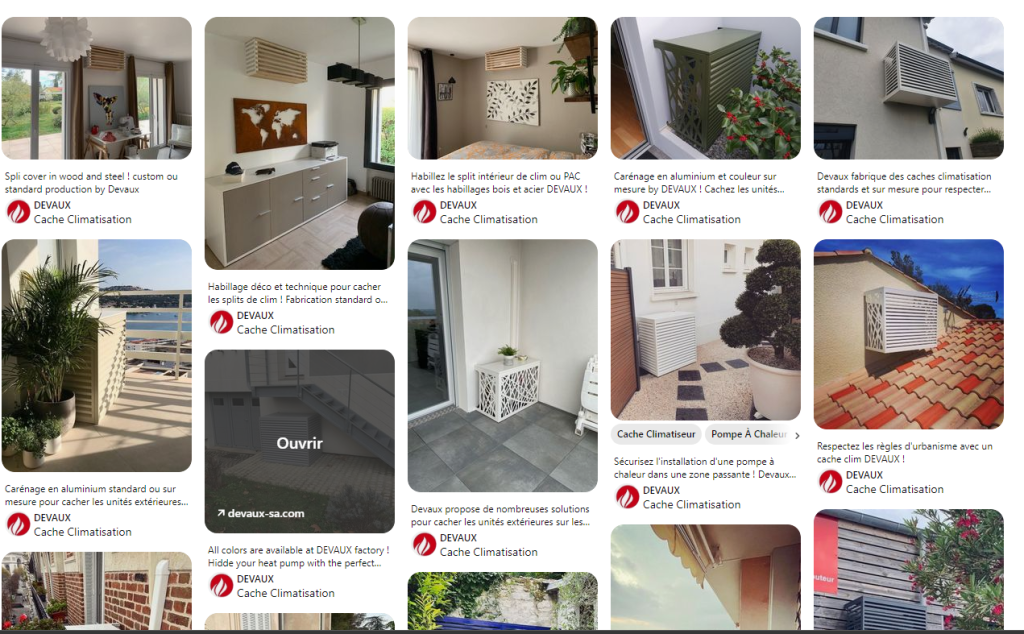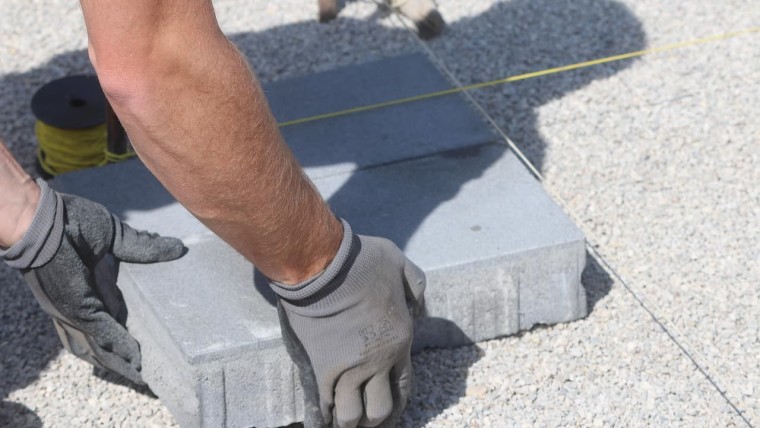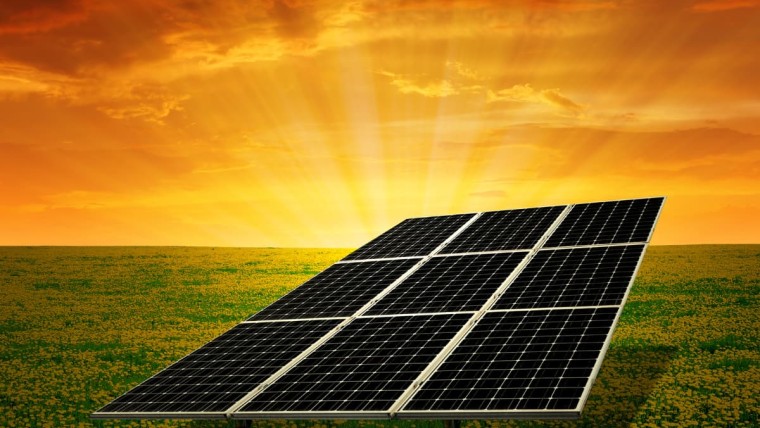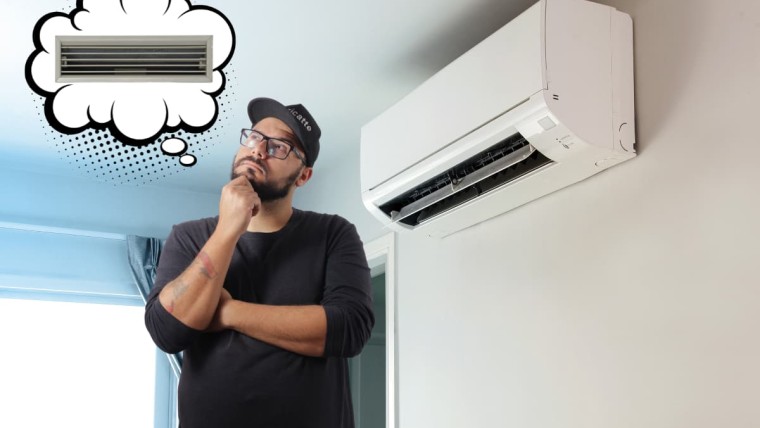Today, the construction of the most recent and modern apartments often involves a central ecological heating system, such as an aerothermal or geothermal heat pump or a district heating network, which is connected to underfloor heating for each apartment. This heating system also produces domestic hot water.
But many apartments also have individual centralized or decentralized heating systems. In other words, each apartment has its own gas or electric boiler, which feeds water radiators, or several electric radiators.
While in collective housing, switching to a heat pump implies the agreement of the whole condominium, as well as a substantial budget due to the size of the heating system, in individually-heated housing, it is perfectly possible to switch to a heat pump with the idea of consuming less energy and therefore reducing energy bills.
In Europe, just over 40% of the population live in an apartment, with Spain, Latvia and Estonia setting the record. In the light of these statistics, the importance of switching to heat pumps in apartments is clear.
Graph showing the distribution of the population in Europe, by type of housing...
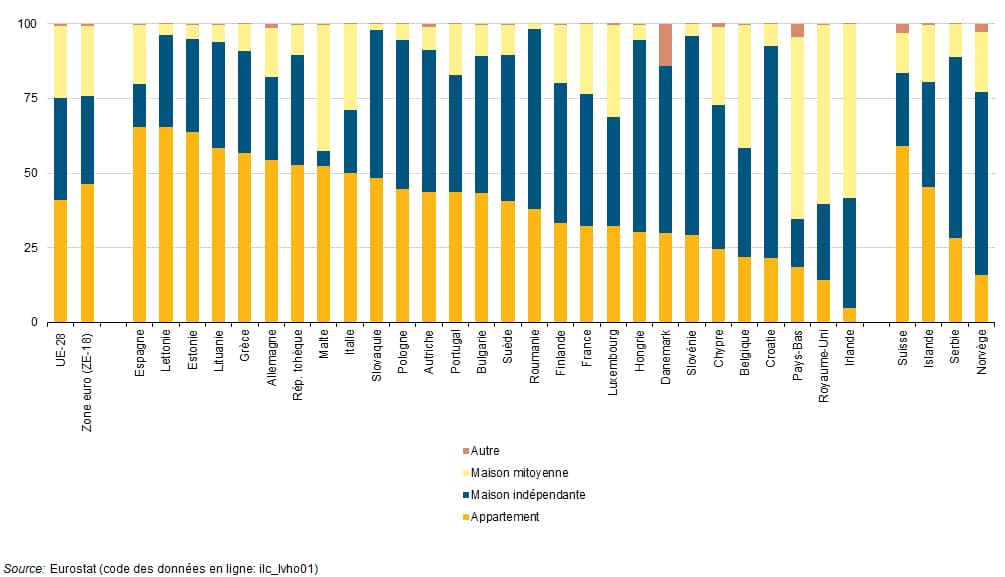
However, there are a number of features specific to apartments and multi-family buildings that make the process of installing a heat pump in an apartment seem rather vague at first glance.
What types of heat pump are suitable for apartments? What planning regulations need to be taken into account, what permits are required, and what precautions need to be taken with regard to neighbors? What are the space constraints for installing a heat pump in an apartment? These are just some of the issues we'll be looking to clarify.
What types of heat pumps are suitable for apartments?
As you probably know, there are several different types of heat pump on the market. These include air-to-water heat pumps, air-to-air heat pumps and geothermal heat pumps.
To install in an apartment, there are two main solutions: air-to-water and air-to-air. In fact, geothermal systems are forgettable insofar as they require a borehole and therefore access to a garden, which is generally not available in apartments.
Air-water heat pump for apartment
Installing an air-to-water heat pump in an apartment is pretty much the same process as for a detached or semi-detached house. You need to install an outdoor unit to collect the heat, and then install the water storage tanks. A buffer tank, if necessary, to keep the system running smoothly, and a domestic hot water tank to make hot water.
This system is ideal if you currently have a hydraulic distribution system (radiators or underfloor heating). The air-to-water heat pump will capture heat from the outside air at the front of your building and redistribute it to the radiators or underfloor heating in your apartment.
If, however, you don't have hydraulic distribution today, you can still opt for this type of heat pump, by adding fan coil units. Fan convectors resemble radiators, which connect directly to your heat pump outdoor unit. Water circulates through an exchanger, and a fan helps push air through the exchanger, pulsing it into the room at the right temperature. The result is a combination of convection heating (air is blown into the room, limiting the effects of draughts) and radiant heating (the hot surface of the fan coil radiates into the room). This solution will of course be more expensive, as it requires the purchase of one or more fan convectors.
Air to air heat pump for apartment
This second type of heat pump is ideal if you don't have a hydraulic distribution system today and, for example, heat with electricity.
The air-to-air heat pump consists of an outdoor unit for installation on the facade, and one or more indoor units that distribute temperature-controlled air into the rooms. These units can be placed high up, as is most often the case, or lower down at wall level, to pulse air into the room from below.
One advantage of these systems is that they are often reversible, meaning you can enjoy the luxury of air conditioning in summer!
Advantages and disadvantages of the different types of heat pumps for apartments
To sum up, here is a table showing the advantages and disadvantages of each system:
| Air-water heat pump for apartment | Air-to-air heat pump for apartments | |
|---|---|---|
| Benefits | - Using outside air as an energy source - Possibility of heating the existing central heating network - Capacity to produce domestic hot water | - Using outside air as an energy source - Possibility of heating rooms without a hydraulic distribution system - Reversible operation for heating and cooling in summer |
| Disadvantages | - Existing hydraulic distribution system required for simple installation - Potentially higher cost if fan coil units are added | - Limited capacity for heating large volumes of space - Potential noise from indoor unit fan - Need several indoor units to heat several rooms |
| Suitable for | - Apartments with water radiators or underfloor heating - Possibility of replacing an old boiler | - Apartments without hydraulic distribution system - Apartments with individual rooms to be heated |
| Power source | Outside air | Outside air |
| Heating capacity | Central heating | Individual room heating |
| Cooling capacity | Not really air-conditioning, since the cold temperature is limited by the dew point of the water. We talk more of cooling. | Genuine air-conditioning with temperatures not limited downwards, without exaggerating 🙂 |
How an apartment heat pump works
Apartment heat pumps are no more and no less than the heat pumps you'd find in a detached house, except that they tend to be lower-powered models.
Operation of the air-water heat pump for apartments
The air-to-water heat pump for apartments operates on the classic principle of a refrigeration circuit. This circuit captures calories from the outside environment, via the evaporation of a refrigerant gas often of the R410A or R32 type, and redistributes these calories via condensation in a condenser to the water in the heating network. This is for winter. In summer, the reverse is true: calories are captured from the water in the network, and evacuated into the outside air.
Here's an example of an outside group

This is where the hot water is supplied to your existing hydraulic distribution system, or connected to convectors.
Operation of the air-to-air heat pump for apartments
In a similar way, the air-to-air heat pump operates on the principle of the usual refrigeration circuit, with the calories captured from the outside air by the refrigerant being transferred to the inside air via an air-cooled condenser located in the units in each room.
Here's what the units look like in each room:
left unit at bottom, right unit at top.
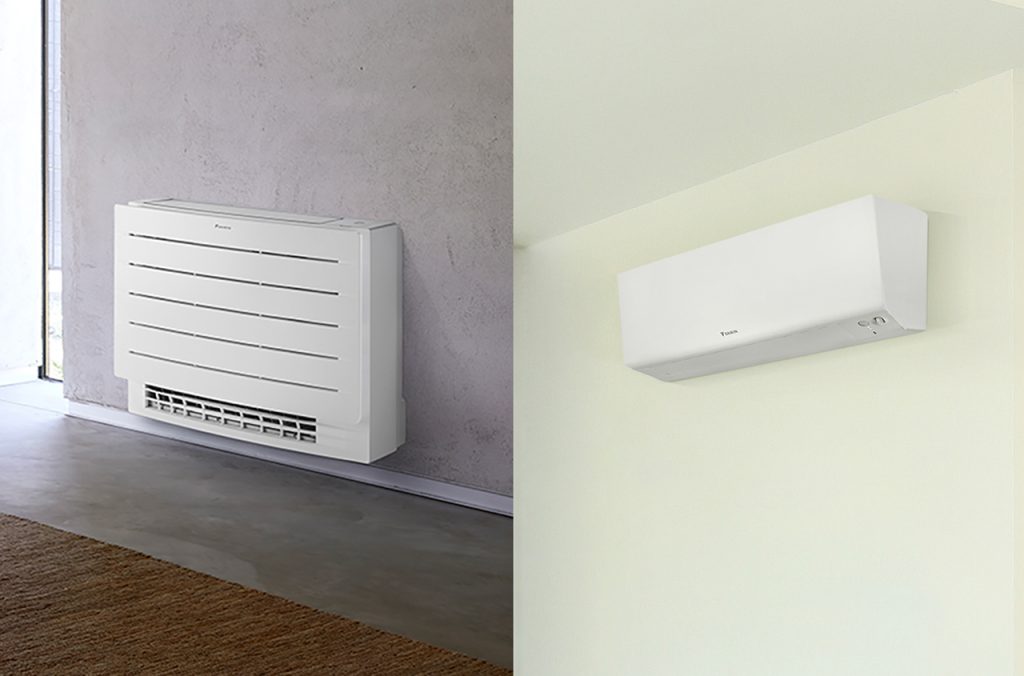
Where and how to install a heat pump in an apartment? Precautions ?
There are many precautions to take, especially as you're not alone in your building.
Planning rules to be respected
Wherever you are, you'll need to submit a declaration of work to the town hall, clearly describing your project, and wait for their approval before starting the work.
Details of the installation, including plans, must be provided. You'll also need to specify the measures taken to prevent noise pollution in the vicinity.
Please check with your local commune to find out what planning regulations apply, as these vary from commune to commune.
In the case of protected areas, heritage zones, etc., additional authorization may be required from the relevant heritage protection authority, which may lengthen lead times and also reduce the likelihood of the project being approved.
The co-ownership must be informed
Syndicate of co-ownership
Since you're not the only one living in your building, you need to inform the condominium association of your heat pump installation project, and tell them about any aesthetic impact on the building's facade.
You'll also need to reassure them about the crucial issue of noise. That's why you'll need to opt for the really quietest models, and carefully check the acoustic data of the model you've chosen. Your neighbors are the first to be concerned, as it's never pleasant to have breakfast on your balcony with a loud fan or compressor noise. It's not uncommon to be turned down because of noise concerns. You can put forward the fact that you have a very quiet heat pump, and that you're going to install an acoustic heat pump cover, for example, to keep noise pollution to a minimum.
Agreement general assembly of owners
Organize a show of hands at the next homeowners' meeting, at which you briefly present your project and let the majority decide whether or not to approve it.
You'll need to be patient and persistent in your dealings with the co-ownership and the commune. If your project is refused in the first instance, you can always rethink it and submit a new application.
Some precautions to take to limit noise or aesthetic nuisance
Aesthetic precautions
When an outdoor unit is installed on the facade of a building, it immediately creates an aesthetic problem. That's why you may want to consider installing a heat pump cover, otherwise known as an air-conditioning cover. A heat pump cover, otherwise known as an air-conditioning cover, is a stylish structure to be placed around your outdoor unit to conceal it from view and preserve the appearance of the facade.
If you don't have any ideas, Pinterest can be a great source of inspiration. Take a look here, for example:
Sound precautions
Whether the appliance is located on the balcony or in front of the building, you will also need to take precautions with regard to noise pollution:
Install anti-vibration mounts: these limit or stop the repercussions of compressor vibrations on the house frame, which could lead to tension between neighbors or even legal action.
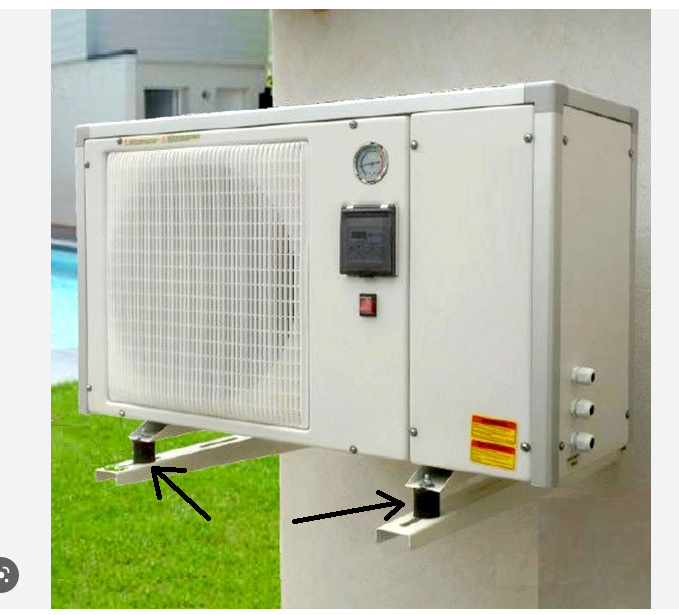
Install an anti-noise or acoustic box: this absorbs a large part of the noise emitted by the compressor and/or fan, so as not to disturb the neighbors. It can also be used as a decorative element to eliminate aesthetic discomfort.
Prefer installation in a technical room or on the roof
Of course, if you can conceal the outdoor unit on the roof so that it's invisible, or in a technical room not too far from your apartment, then this is the ideal solution. But this is rarely the case.
Heat pump installation solutions for apartment space constraints
PAC Air Air for apartments without hydraulic distribution
If you don't have a hydraulic network, your best bet is to install an air-to-air heat pump, which will have the advantage of acting as an air conditioner in summer.
The process steps are as follows:
- Find out more about the quietest air-to-air heat pumps and reversible air-conditioning systems.
- Buy your model either through an installer (recommended) or directly. It will consist of an outdoor unit and an indoor unit for each room to be heated/cooled.
- Install the outdoor unit on the facade, on the roof, or in a technical room, outside the apartment. If installed on the facade, you'll need a wall bracket and anti-vibration mounts. See pictures


- Install each indoor unit in the room of your choice, preferably high up, to limit the space taken up by walls in the living space, and also to place the source of cold air (in summer) upwards.
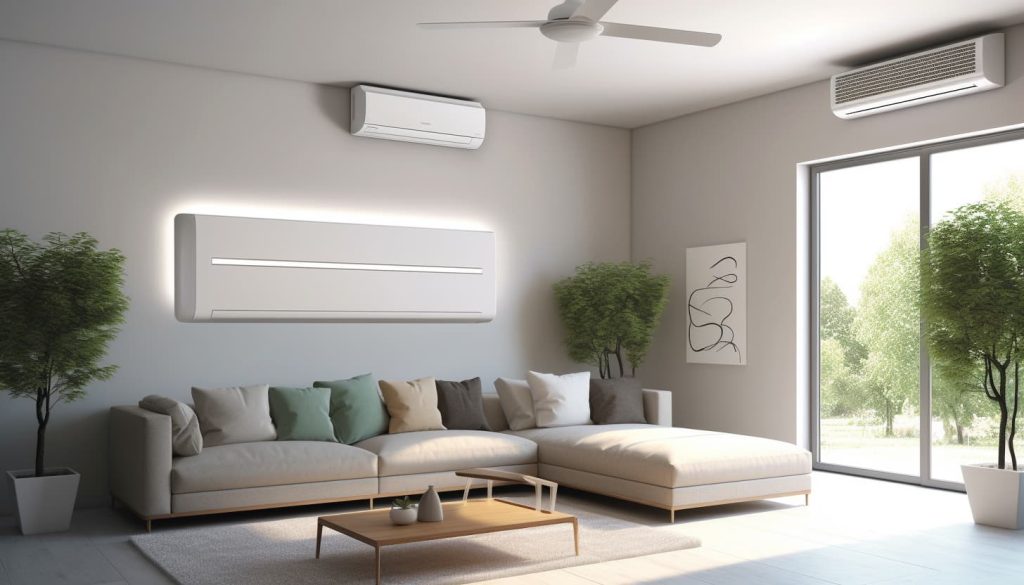
PAC Air Water for apartments with hydraulic distribution
Look out for quiet, space-saving models. Note that Toshiba offers one of the slimmest outdoor units on the market, with its Estia model.
- Buy your model via installer or online
- Front-mounting the outdoor unit
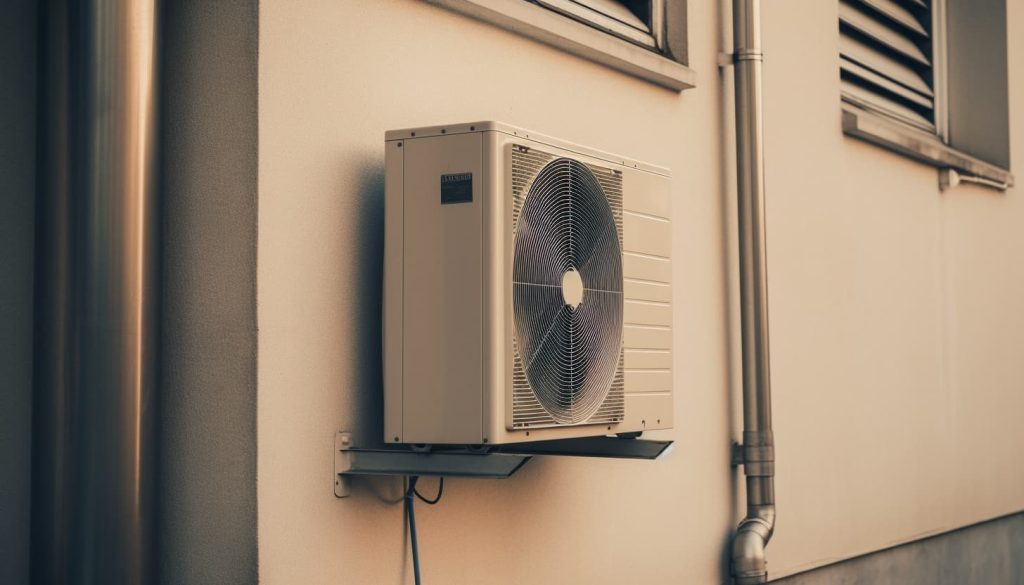
- Install a hot water cylinder in a cupboard if necessary, or in a suitable room in the apartment. This tank will be connected to the outdoor unit.
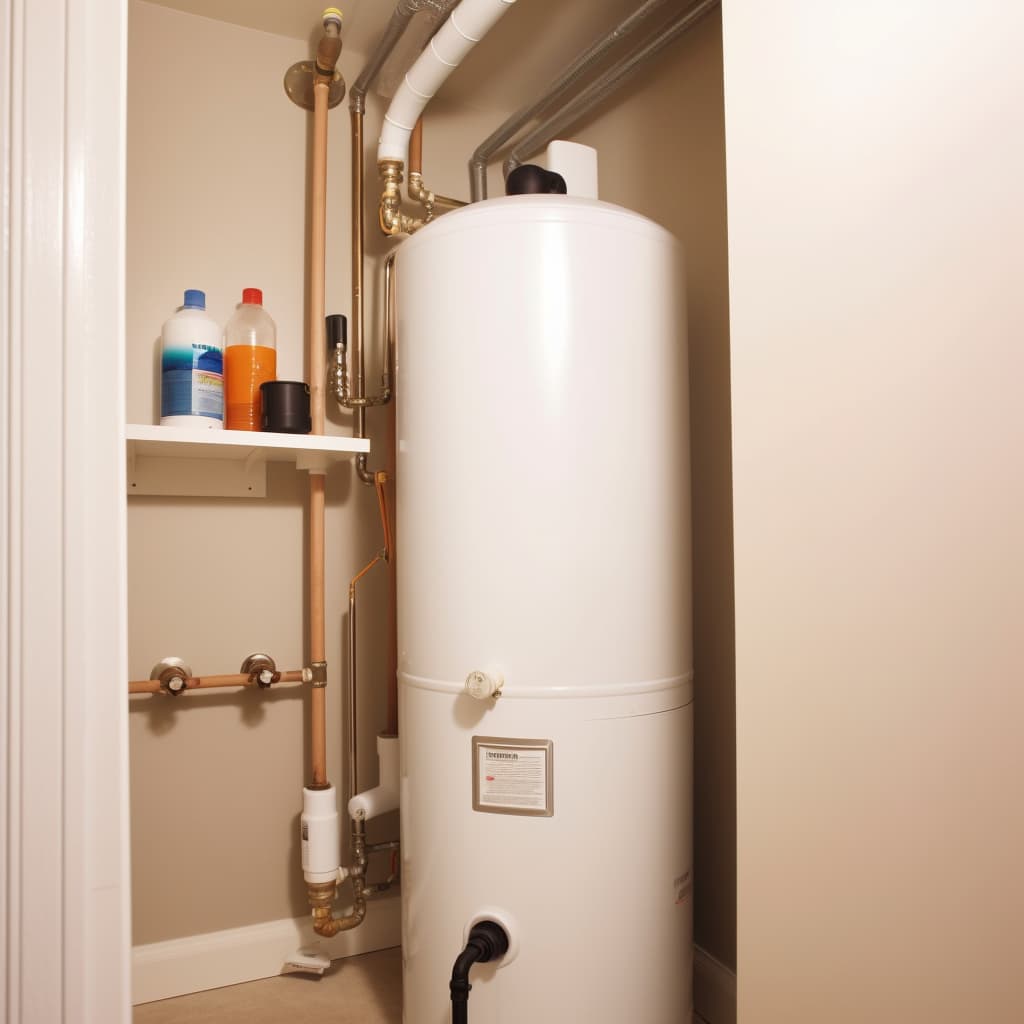
- Either graft onto your existing hydraulic network, with radiators or underfloor heating, or replace the radiators or underfloor heating and start from scratch.
To conclude: the advantages and disadvantages of installing a heat pump in an apartment
- Energy savings: Lower energy bills thanks to the use of outside air as an energy source.
- Ecological: An environmentally-friendly heating solution.
- Comfort: even heating and domestic hot water production.
- Adaptability: different types of heat pump (air-to-air or air-to-water) can be installed to suit the needs and constraints of the apartment.
- Summer air-conditioning: some air-to-air heat pumps are reversible, allowing you to cool your apartment during the warmer months.
- Installation cost: High initial investment to purchase and install the heat pump.
- Co-ownership agreement: Co-ownership agreement required for heat pump installation.
- Planning regulations and permits: Obligation to comply with planning regulations and obtain the necessary permits for heat pump installation.
- Noise: Potential noise nuisance for neighbors due to noise generated by heat pump operation.
- Space constraints: Difficulties associated with heat pump installation, depending on available space and apartment-specific constraints (no garden, balcony, technical room, etc.).
- Aesthetics: Visual impact of outdoor unit installation on building facade.

Julien G.
Julien, diplômé en ingénierie mécanique et spécialiste en génie climatique depuis 2009, s'est reconverti en rédacteur spécialisé en énergies renouvelables, avec une expertise en pompes à chaleur et panneaux solaires photovoltaïques pour l'habitat individuel.
